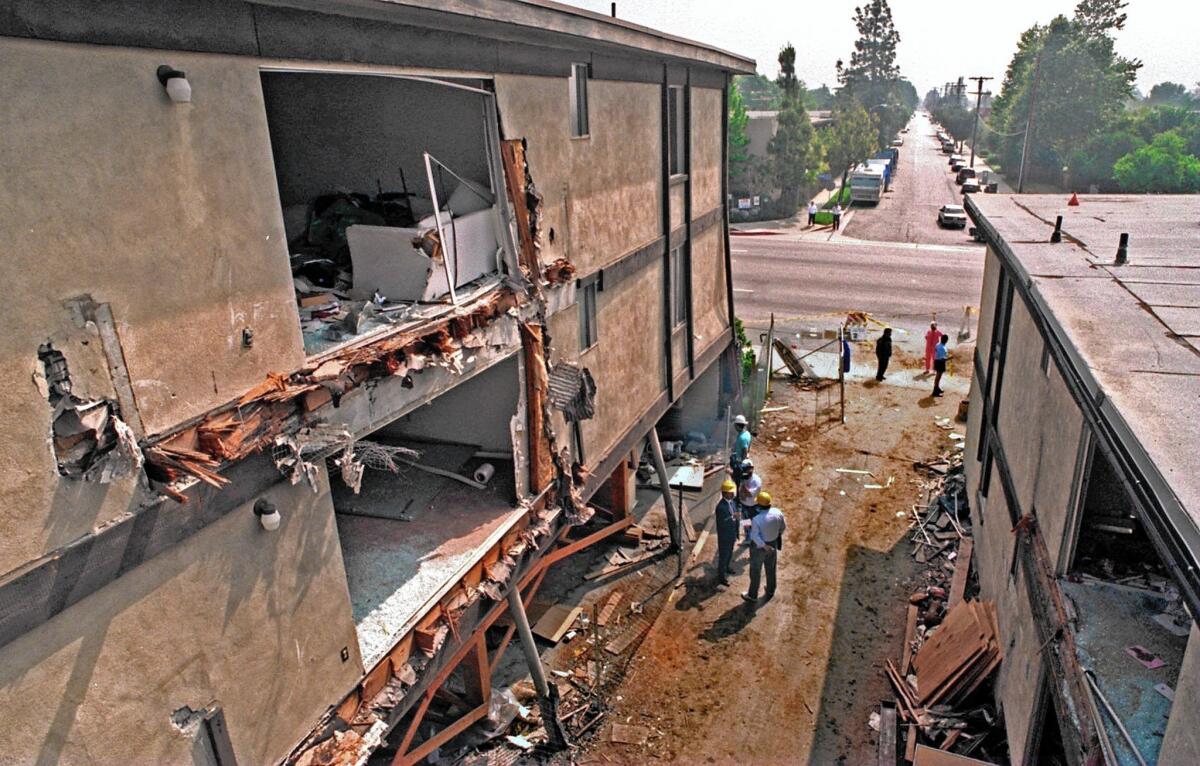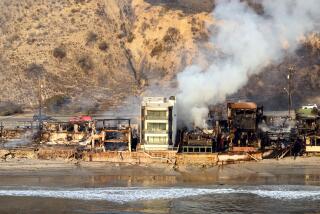How L.A. conquered an earthquake danger zone: Brick buildings

An apartment complex that collapsed in the 1994 Northridge earthquake.
- Share via
As Los Angeles moves to require earthquake retrofitting of concrete buildings and “soft story” apartments, the city can look at an earlier seismic safety campaign for inspiration.
Los Angeles was one of the first cities in California to require retrofitting of unreinforced brick buildings. Of about 8,000 buildings, almost all have been retrofitted or demolished after a 1981 law.
In some cases, Los Angeles officials had to go to court and threaten to label a building as unsafe, barring anyone from being inside it.
No one died from brick-building damage in the 1994 Northridge earthquake.
Unlike modern buildings with frames, brick buildings have no skeleton. So the only thing keeping the structure upright is the mortar between the bricks.
But the mortar can essentially be ground into sand when shaken in an earthquake. Bricks start being ejected from the upper walls, and the roof can come crashing down.
The basic retrofitting involves pushing in steel rods to affix the brick wall to the building’s ceilings and floors. More extensive retrofittings involve installing diagonal braces or adding reinforced concrete or polymers to the walls.
The problem with brick buildings was clear during the 1933 Long Beach earthquake: Structures were left in rubble; bricks shot across the street like cannonballs.
Other cities also require retrofitting of unreinforced masonry buildings. About 70% of the 26,000 brick buildings across California have been retrofitted or demolished, with major cities such as San Francisco and Los Angeles requiring action, according to the most recently collected data published by the California Seismic Safety Commission.
But others have not.
Many are in some of California’s poorest cities, where officials have chosen not to require property owners to make the upgrades.
Seismic experts are particularly worried about communities in western San Bernardino County, which are threatened by the San Andreas and San Jacinto faults.
The city of San Bernardino, which is in bankruptcy, has one of the largest concentrations of unreinforced masonry buildings in the state that are at risk of particularly intense ground motion.
More to Read
Sign up for Essential California
The most important California stories and recommendations in your inbox every morning.
You may occasionally receive promotional content from the Los Angeles Times.











